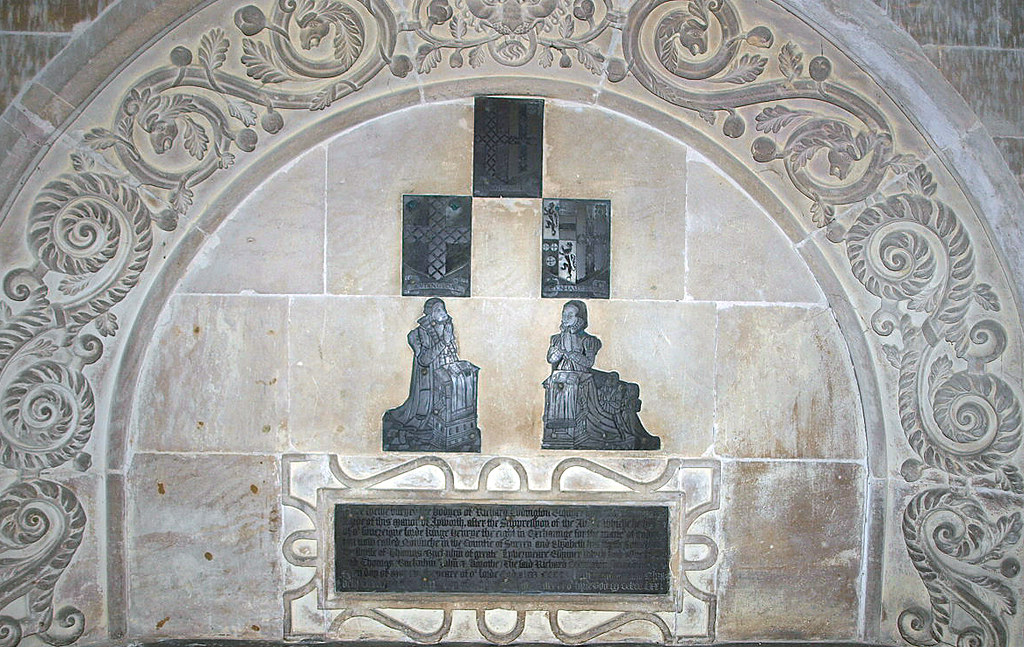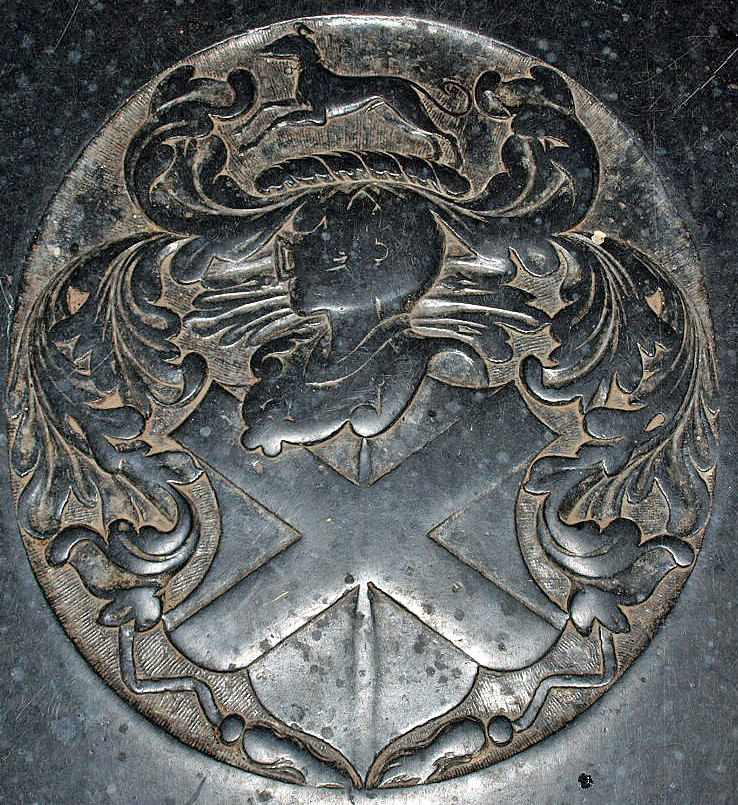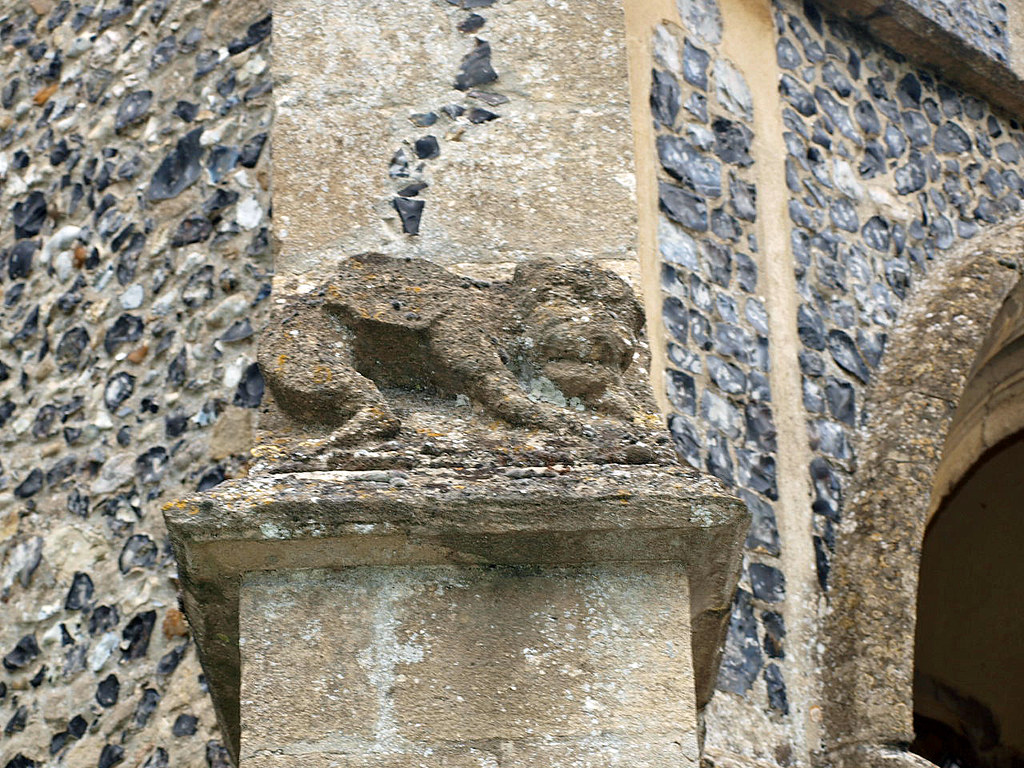ST MARY. Dec chancel, almost entirely rebuilt. Dec W windows in the aisles, Dec doorway in the S aisle. All the rest Perp. Big W tower with flushwork frieze at the base and flushwork frieze at the top. Flushwork panelled battlements. On the SE buttress panel with the name of Abbot Schot of Bury St Edmunds, that is of 1470-3; also by the W door a tile with inscription: ‘Thome Vyal gaf to the stepil iii £.’ His will is of 1472. Money for the leading of the roof was left in 1533.* - SCREEN. Only the dado remains. - MONUMENT. Richard Codington d. 1567 and wife. Tomb-chest with decorated pilasters and three shields. At the back round arch with exceptionally fine Italian leaf carving. Against the back wall brass effigies. The inscription records that Richard Codington was granted the manor of Ixworth after the Dissolution of the Abbey in exchange for Codington in Surrey, then re-named Nonesuch. The grant was indeed made in 1538.
* The C18 antiquarian Tom Martin noted at the lower part of the S side of the steeple an inscription on a glazed brick to William Dense, Prior of Ixworth from 1467 to c. 1484. Wills of 1458 and 1471 give money to the chancel and to the tower, respectively (ARA).
IXWORTH. We come to it through pleasant lanes well known to Suffolk’s country poet Robert Bloomfield, who got his little learning and a few months of schooling here, charging his mind with rural scenes which were to come back to him in a London garret and take shape in his famous poem, The Farmer’s Boy.
We pass a watermill on the way and a little round house from the centre of whose thatched roof rises a tall twisted chimney; and we come upon many old houses, one of the most ancient being an inn which was housing wayfarers more than 400 years ago. A more notable relic of antiquity forms part of Ixworth Abbey, a charming modern house on the site of a Norman priory. The old crypt, which has a vaulted roof on massive pillars, carved soon after the Battle of Hastings, is now the hall of the house. In the foundations of the priory were discovered a century ago a body wrapped in a lead shroud, and the remains of a furnace for melting lead. Here is still the coffin stone of an early prior, with two Norman coffins.
Separated from the rectory by the Blackbourne stream, the 14th century flint church is shaded by fine trees, above which rises the tower built by a 15th century abbot of Bury St Edmunds, its parapet and its buttresses adorned with the wheel of St Catherine, the arms of Bury Abbey, and other devices. Old corbels carry the roof of the porch.
The chief feature of the church is the elaborate 16th century canopied tomb of Richard Codington and his wife, whose portrait brasses show them in Tudor costume, with their two children. Two men from Ixworth Abbey, master and servant, are remembered as faithful unto death: a bronze tablet to General Cartwright, who during the Great War was five times mentioned in despatches and awarded the DSO, and one who served him here, William Drake, carpenter at the Abbey for 45 years. The church has a 14th century font, the doorway and stairs of the rood loft, and much of the 15th century hammer-beam nave roof. There is an oak screen in the chancel, an oak pulpit supported by two angels, and an old ironbound almsbox.



No comments:
Post a Comment